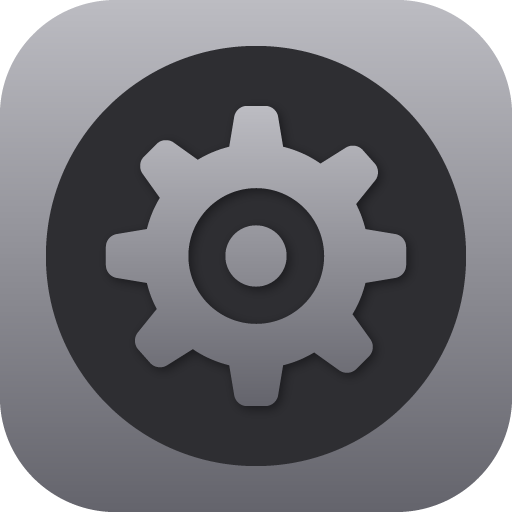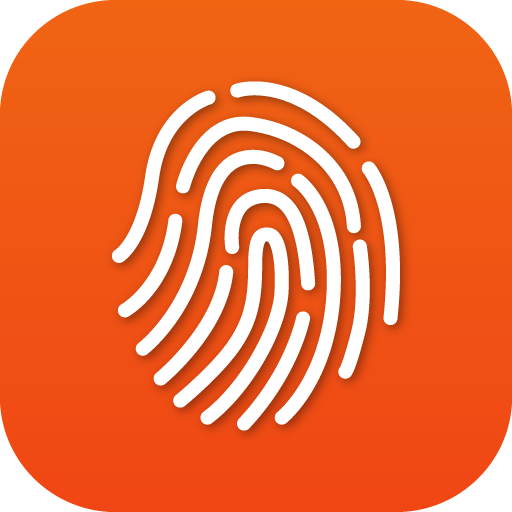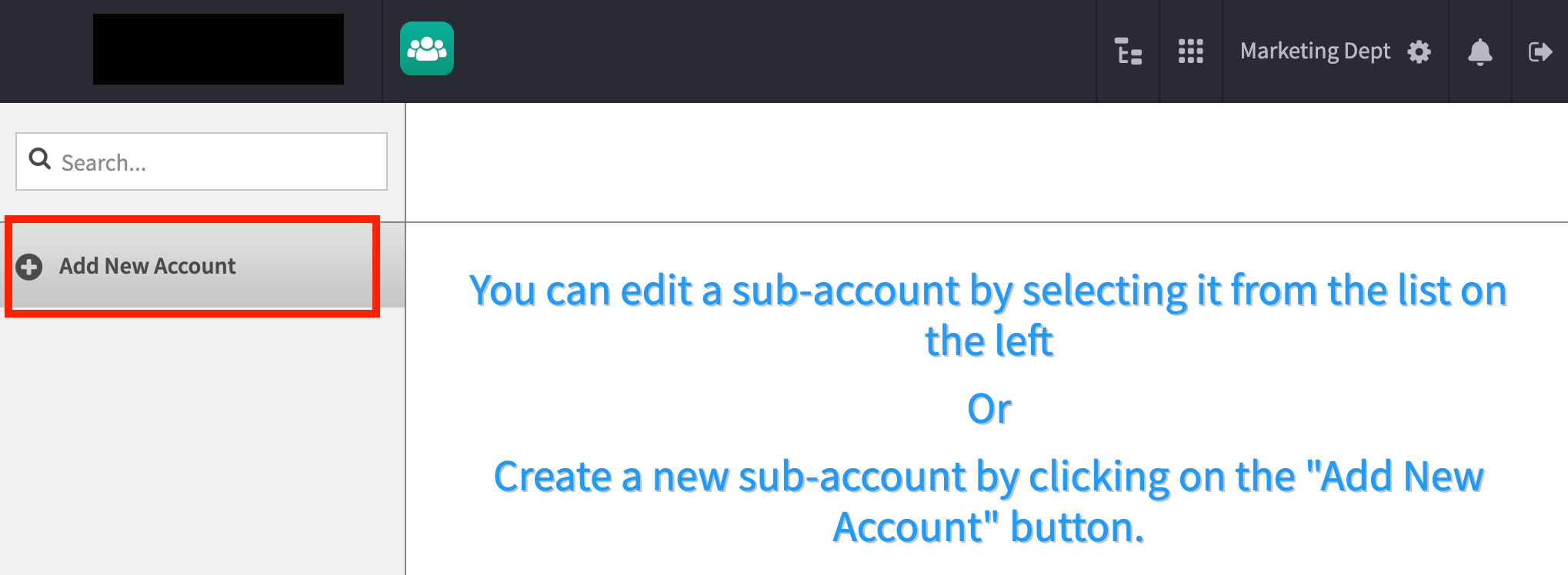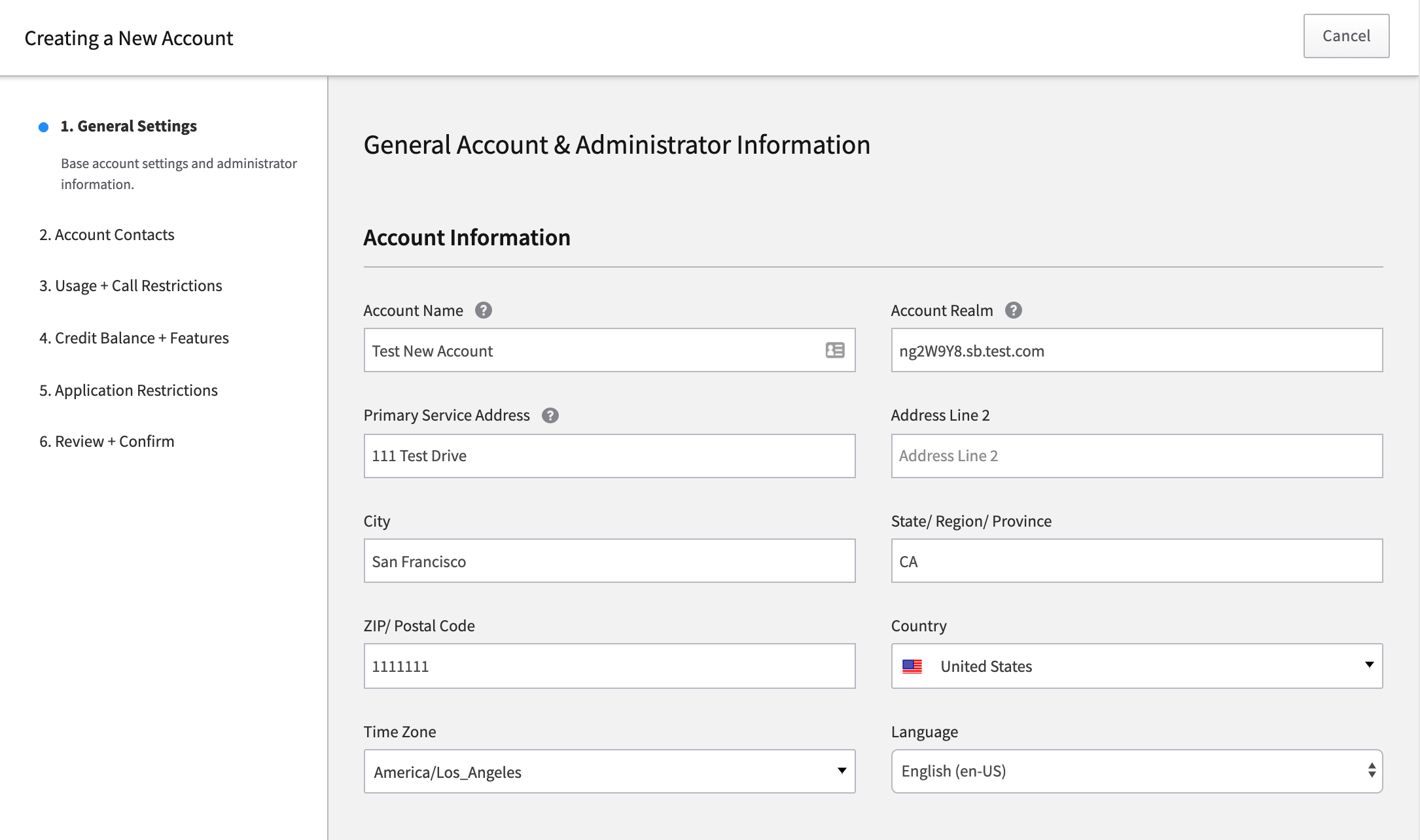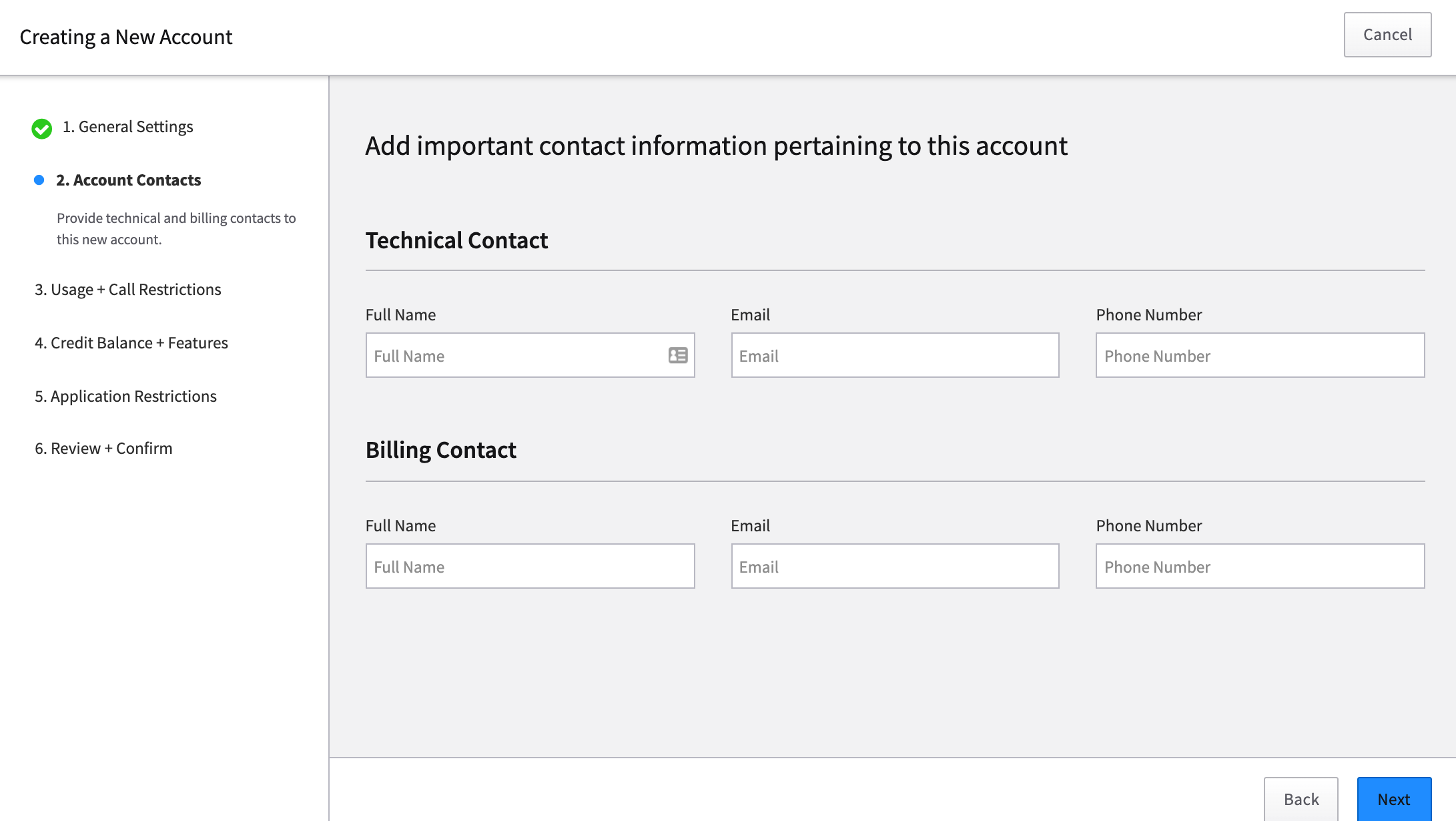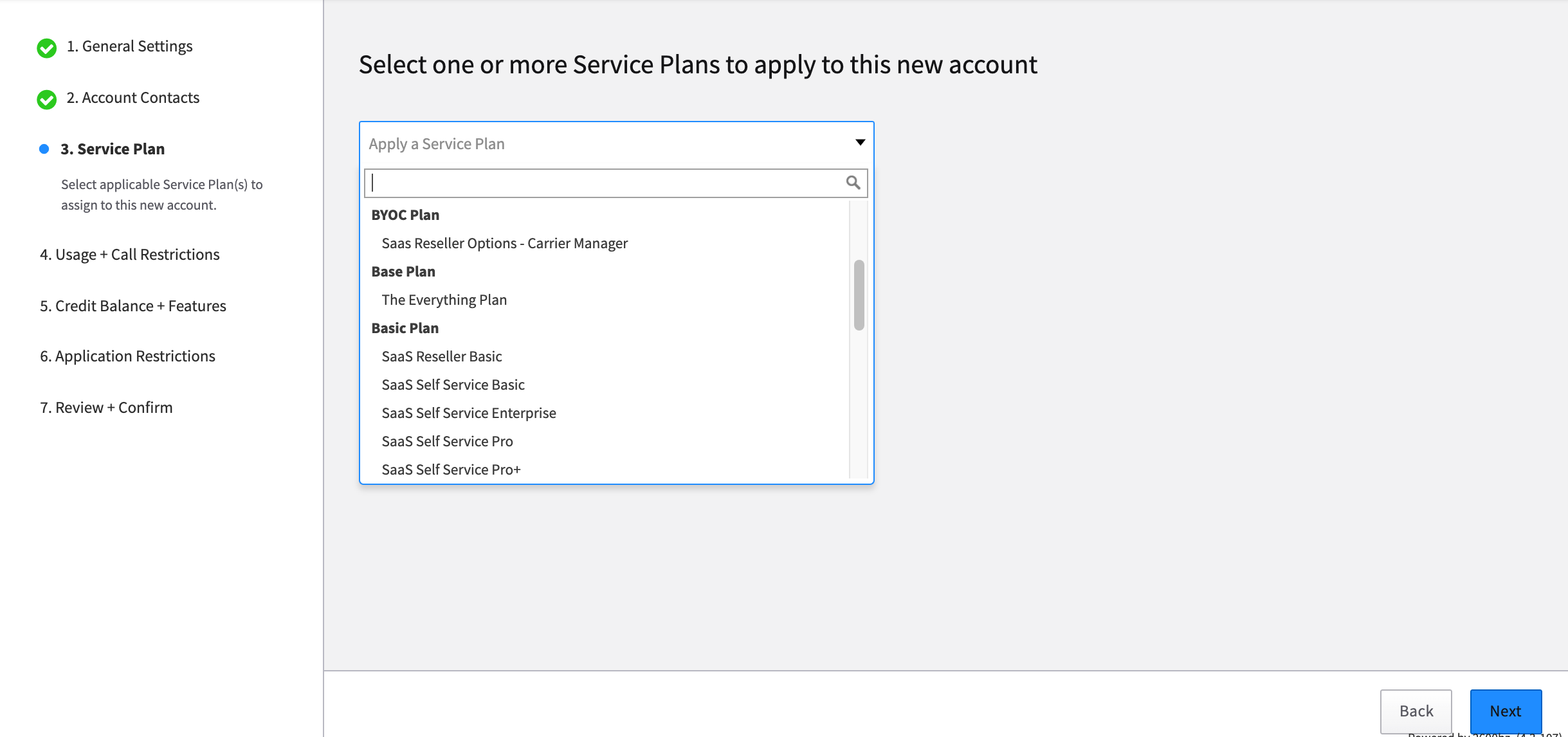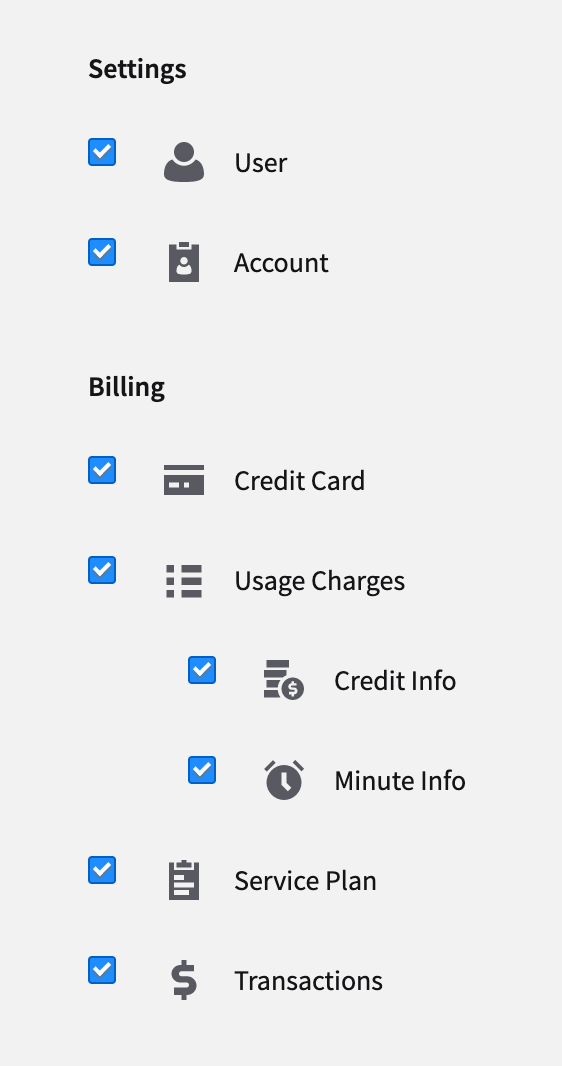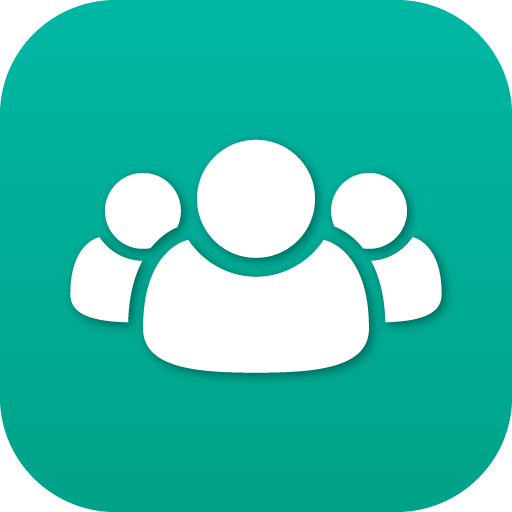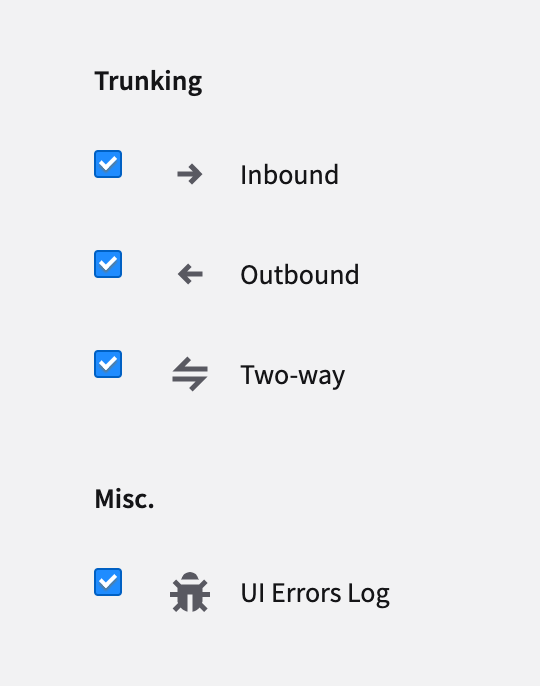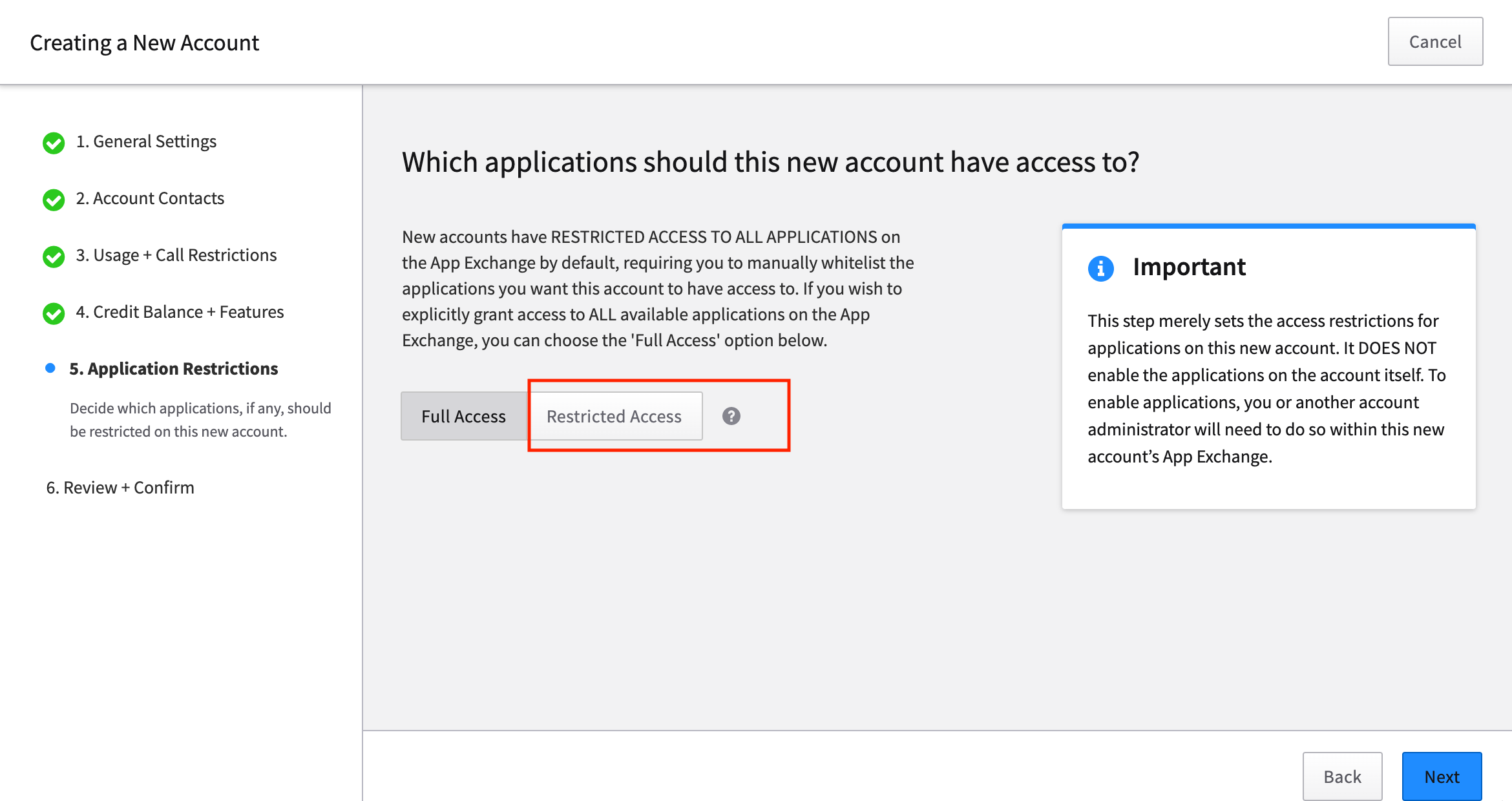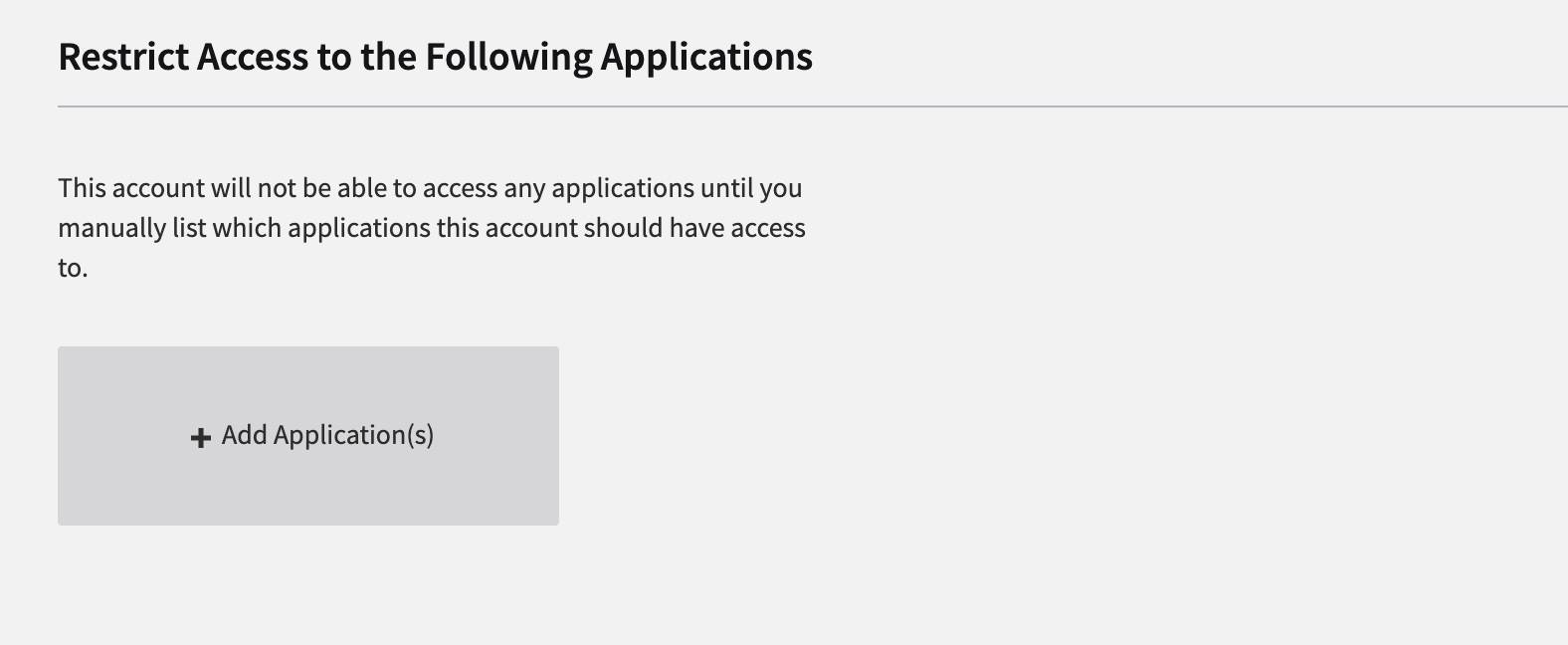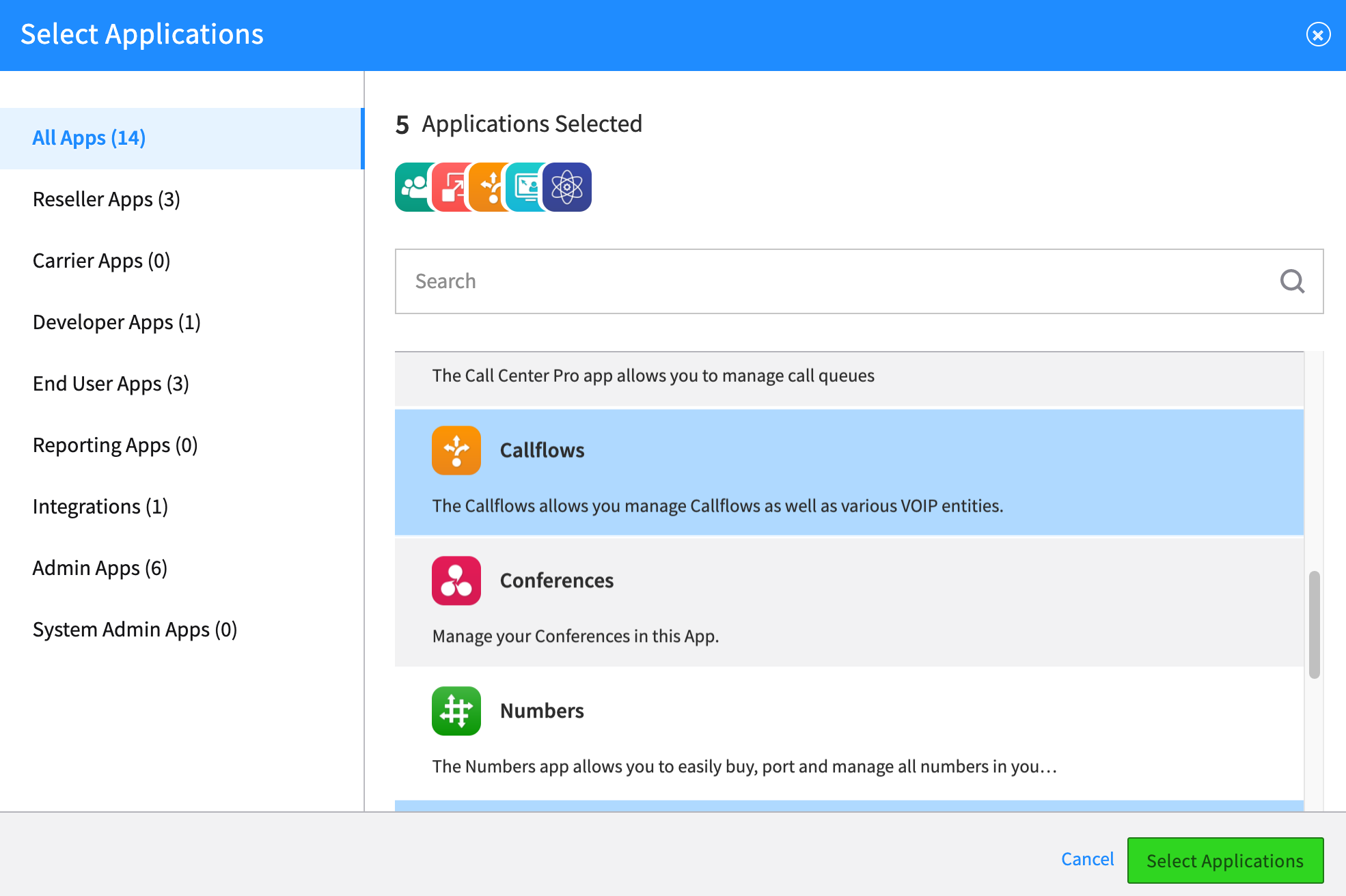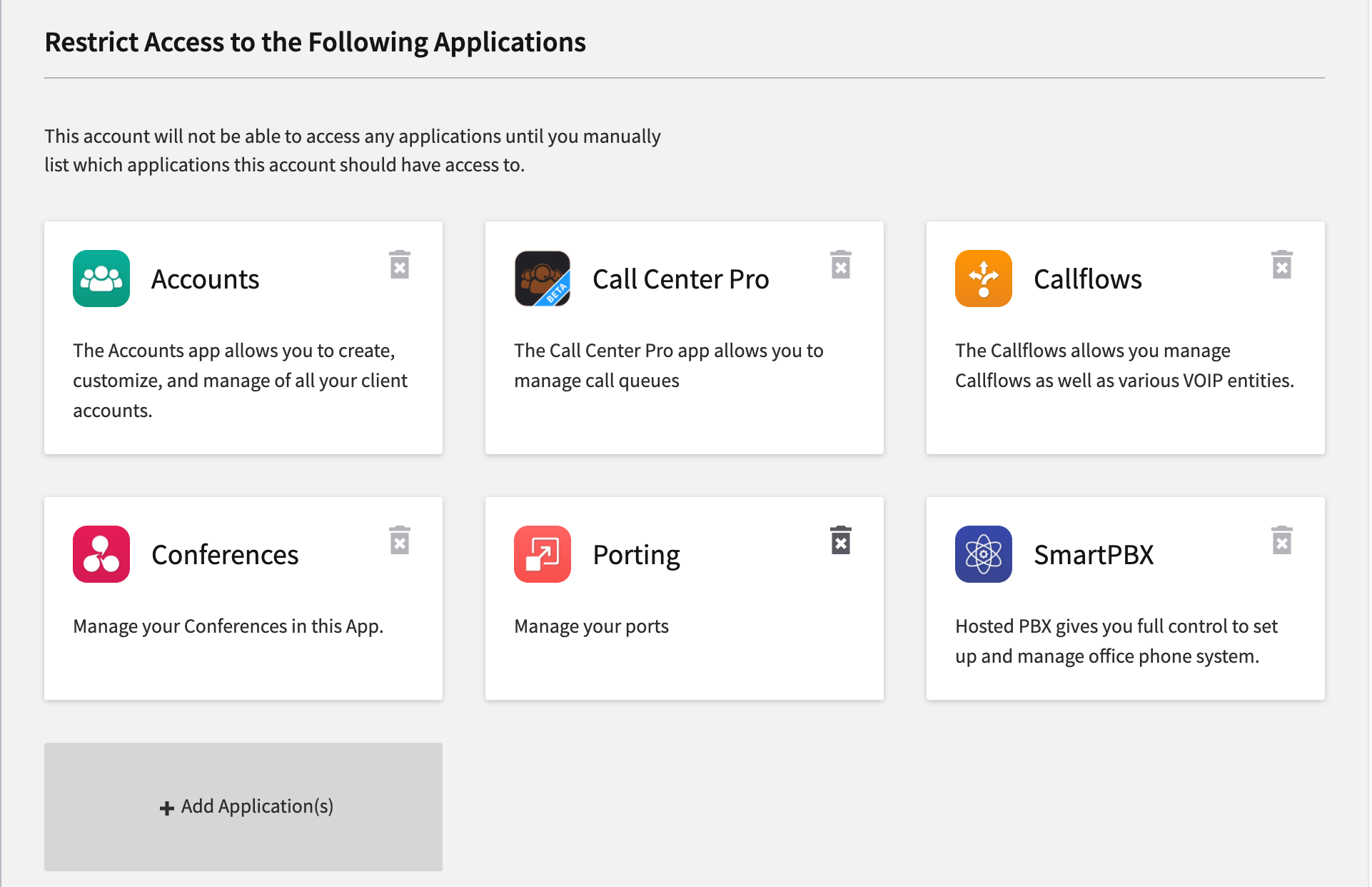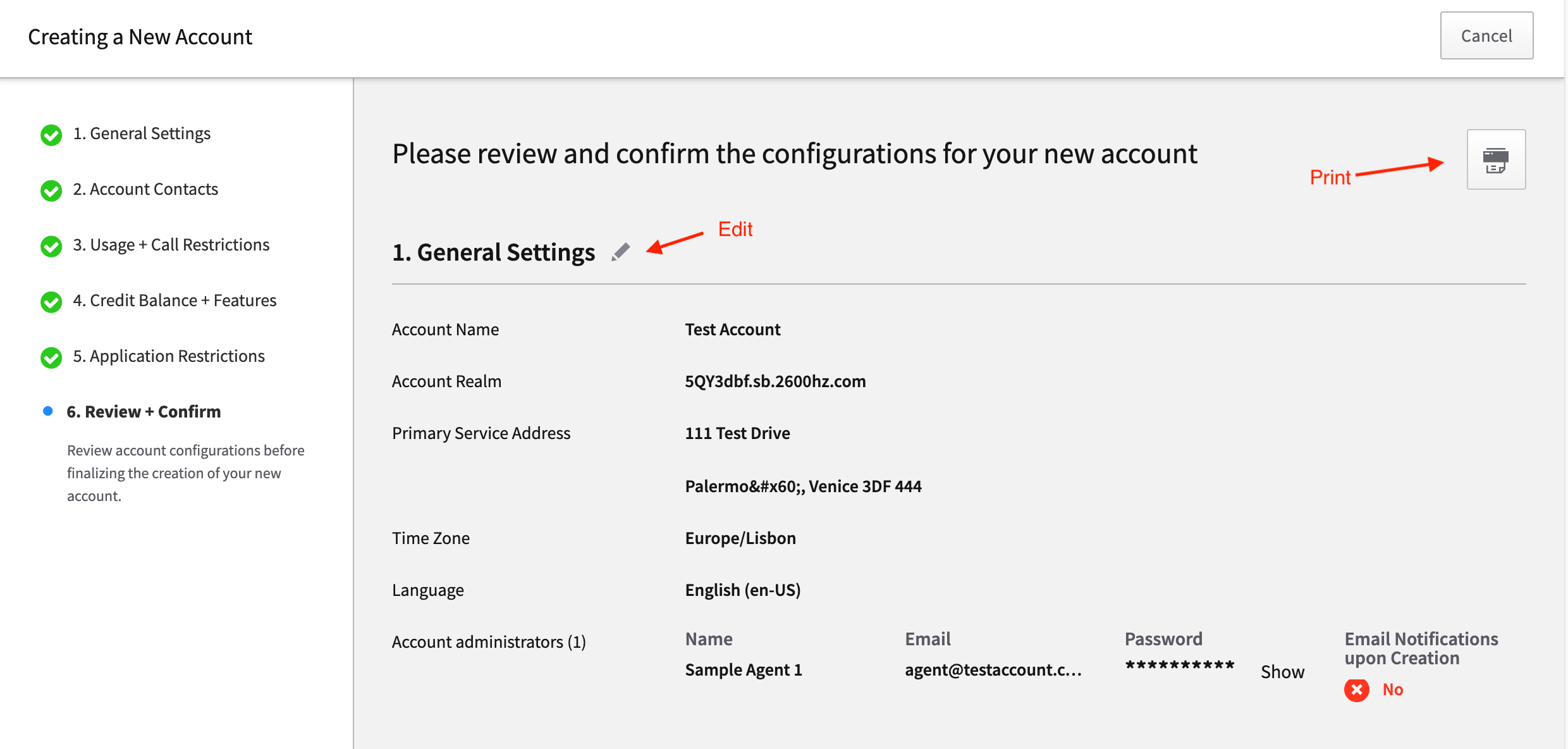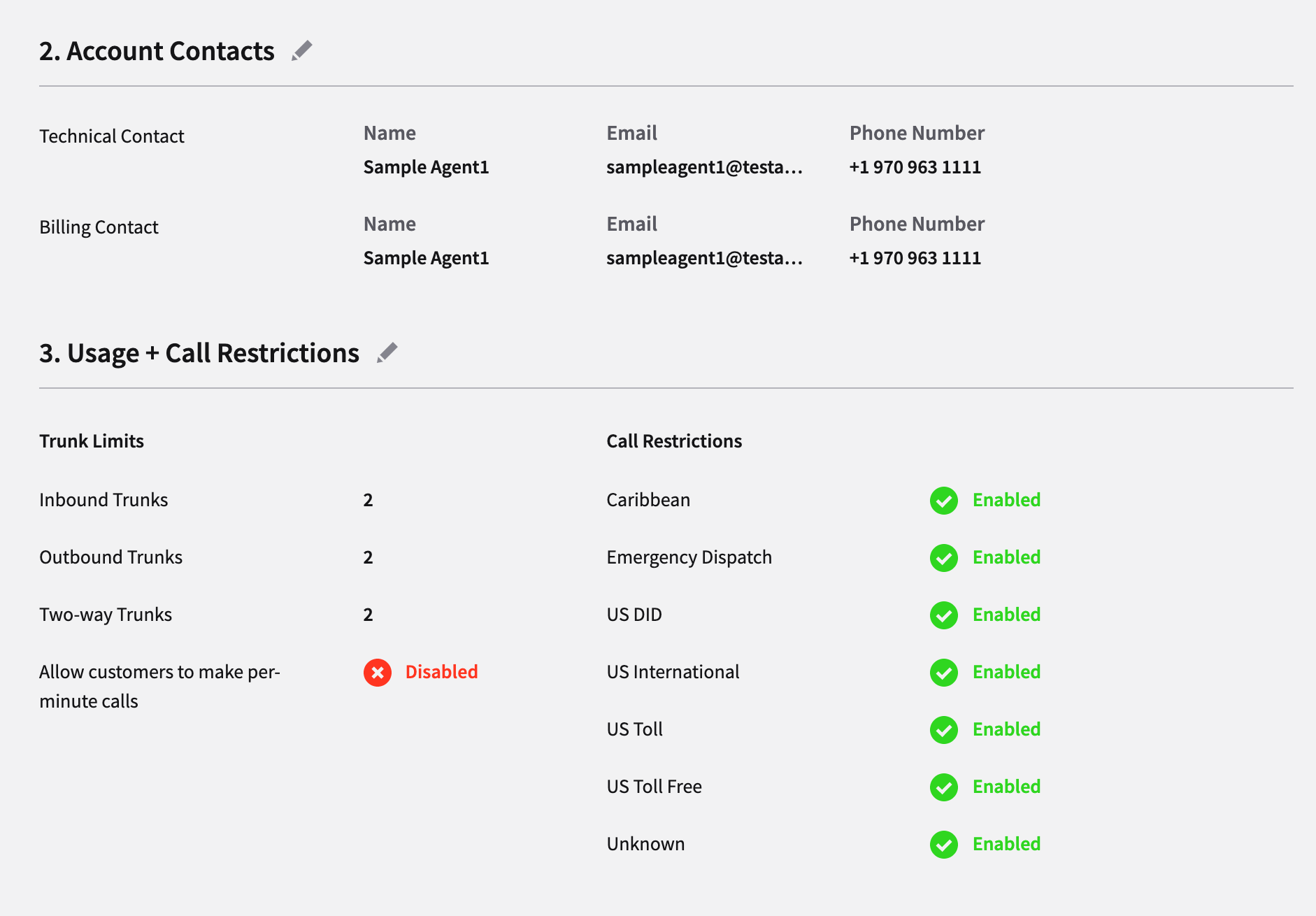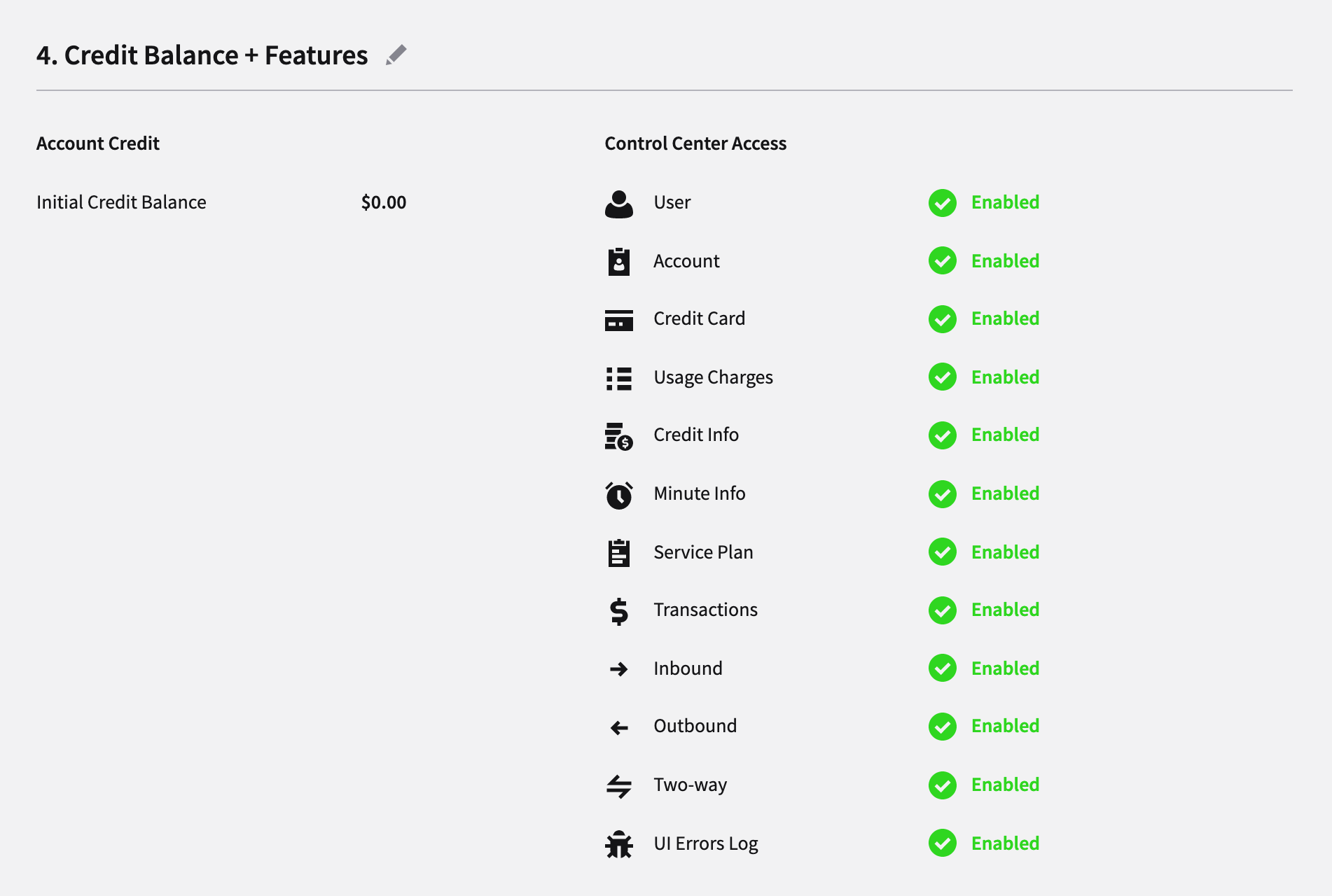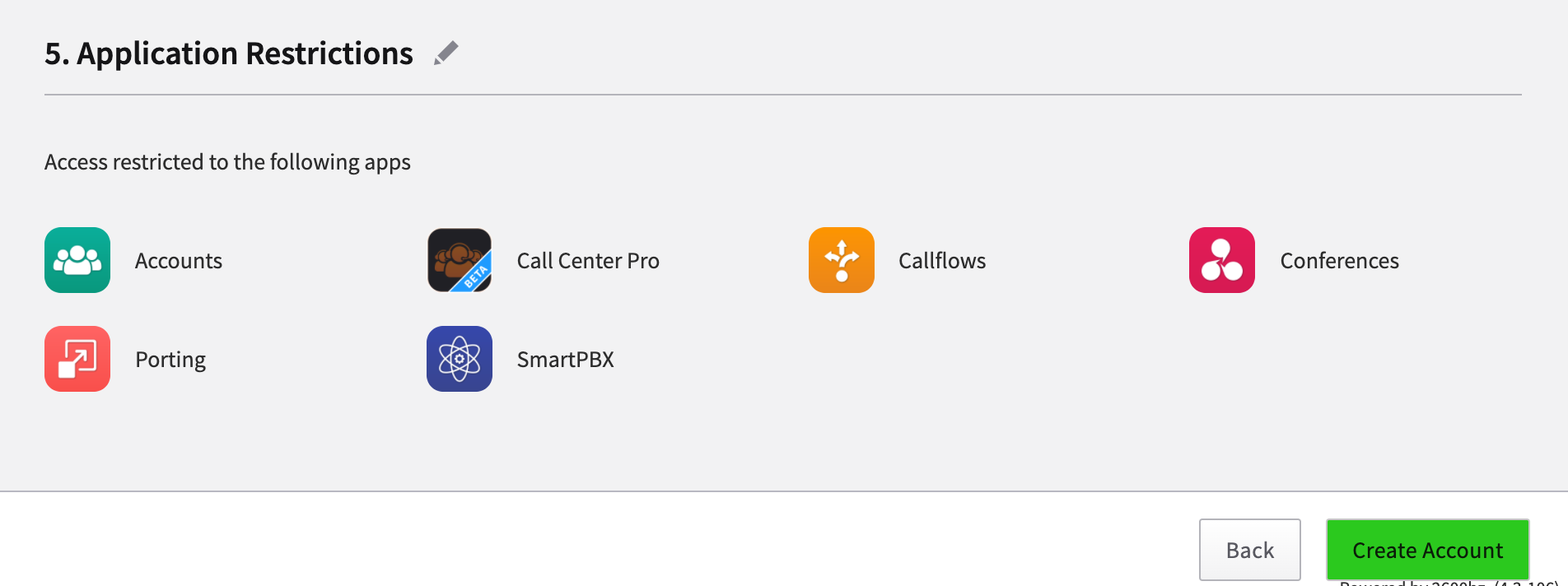Search the Community
Showing results for tags 'user guide'.
-
User Story Once an account has been set up, an administrator wants to make some edits to the global account settings. Once an account has been set up, users want to personalize their experience with local time, date, language, and other settings. Before You Start The first step to setting up your account is to use the Account Manager Wizard application. This is often done by your administrator. A user guide for that process is HERE. Before reviewing and making edits, confirm with your administrator these global settings have been set to match the account strategy. This includes strategies for: Custom branding and DNS paths if desired. Settings for localizing the UI and system prompts to an alternate language if desired. Your Control Center Dashboard Once your account is created and you are given a green flag to review and edit your own settings, log in and select the Account Name at the top right of your window. You will see the screen below: Settings If you are an administrator you will have access to editing both the User settings and the Account settings from this screen. User Settings: Are your user preferences for your personal interface with applications such as SmartPBX and Callflows, etc. By default you will inherit the Account (Global) settings; here you can customize it to match your location and personal preferences. This is helpful if you are in a different timezone from your home account, and/or your native language is different than the home account language.’ Account Settings: These settings define some of the defaults for your global account. NOTE: If you are an administrator and “masquerading” in an account you will not see the User Settings option in your menu. The User preferences allows each account user to customize the interface for their personal dashboard. To edit/update these values, select the gear to the right of the setting. email This is the email you will use to log in. NOTE: Making a change to the email address in this section, will also modify the users section in SmartPBX. It will enable the "Send emails to an alternate address" option. It will not change the email address since that is their login name. Password This is where to manage your password for logging in. Timezone & Language Here you can enter the timezone and language you wish to use for this user. This is helpful if your native language is different from your home office native language. Notes: If you update the Timezone setting, it will stamp your voicemails and incoming call data using your new value. If you update the Language here, it will display your new language as the UI in SmartPBX and a few other applications. It will not affect the system prompts and voicemail messaging system. If you change your language setting, you may need to log out and back in to see the results. Some settings can be changed here, and also in the SmartPBX app (for example your CallerID setting). As the database is the same, the last change you make will be the one that is used. Date and Time Display This setting will update your date and time display in the SmartPBX application. You can also elect to display hours in 12 or 24 (system default) mode. NOTE: A known limitation of this that is scheduled to be resolved is that the voicemail time stamp does not yet consider this setting, and defaults to the Month/Day/Year format. Colorblind Mode Setting this on will update the color palette to colors more friendly for most colorblind users. For example, the arrows representing inbound and outbound calls in the call history page are changed from orange and blue to black and white. Caller-ID Privacy This setting defines how you want your outgoing calls to be identified in Caller ID. NOTE: If you select “Hide name and Number” your calls may be rejected by a receiving PBX or caller filtration software system. Phone Numbers Format This setting identifies the format you want to see phone numbers in. By default, all phone numbers are displayed in their international standard (+1 415 222 1234 for a US number for instance), but you can also choose to display numbers in their national format (e.g. 415 888-2222 for a US number). Finally you can choose to display all numbers in their international format, and then select countries that you wish to display in their national formats. This would mean for example, a US number could display without the country code, and all other international numbers would keep their country codes. National mode will show only the local format. If you anticipate international calls this is not recommended. NOTE If your host account is transitioning to a localized language system wide, it’s recommended you keep this setting at the Account Default. The account settings are available only if you are an account administrator. These settings are interpreted by additional components of the system including blacklisting numbers, office hours messaging in callflows, and localizing the software to an alternate language. Account Name This is the name the account was originally created as. This is the “human friendly” version of the account. Account ID This value is read-only and is what the system uses internally as a unique identifier . It can be referenced and copied into a support ticket for account debugging if necessary. Account Realm The account realm is an important component for the internal workings of your system. It is important this setting is defined and kept static once it is defined. By default, the realm is auto-generated by the Create Account Wizard. As it is an auto-generated name it is not typically a recognizable string of characters; most accounts will rename the first portion of the string using the company or department name to more easily distinguish among multiple accounts. NOTE: We recommend you define this during your Account Wizard setup process, and if you are white-labeling the solution set, it’s best to have this already defined before you access these pages. It is not recommended you change it here, as it can cause service disruptions. Technical Contact Enter the contact person who should be the first line of support for your account. This may already be included as part of your original installation. Timezone & Language This is where the default Timezone and Language for the system is defined. Notes The User Interface language displayed within the SmartPBX application can be overwritten by each user and customized to reflect a native language if it is different from the company’s home account language. The Timezone setting defines a “home default” time zone that will be used to stamp incoming calls, track office hours and holiday settings, and help direct callflow variables as needed. The language defined here is a component to a larger network of settings involved in localizing the system’s voice prompts and redirection english language commands in the back end as well as changing its User Interface prompts. If your system is integrating an alternate default language that includes all prompts, please request access to our localization documents. Billing Credit Card on File You MUST enter a credit card and maintain a balance for your main account. Once this is entered, it will be used to: Purchase new numbers Add credit under the Usage Charges screen for discrete charges including Monthly charges Added billing for some applications Added billing for SMS texts, depending on your service plan Manual override charges for call restrictions as defined in the Accounts setup. NOTES: Only the top level account needs to have credit card information associated to it. When an account is first created and set up. A service plan will be added. Billing starts at that date (proration). When the customer enters their card, there will be a charge then. They will also then be at the beginning of each month. The credit card is charged at billing cycles. When an account is first set up, after the service plan has been added, the account will be charged for the remainder of the month (proration). Under the Usage Charges / Subscriptions tab you can set when and how you want to set up payments for your monthly bill -- as an automatic billing via this charge card, charged against your account credit, or by manually going to check your balances. The latter, called “Self Manage” is set as the default. Billing Contact Enter contact information for billing questions. This is used if there is someone specific that we need to speak with regarding billing. Usage Charges This is where you can monitor your account usage, manage credits, enable threshold alerts, enable Auto Recharge, and if a Reseller, manage subscription payment. Manage Credit for Main and Sub Accounts Available Credits Make sure you check to see if you are in the Master Account or your sub-account when you add credit. The master account credit is the value that will be used to bill you. The sub-account credit is what we call “fake money.” This is a dollar value directed at the sub account, but will be billed through the main account. All charges appear on the master account. SO if they are using per minute only, it will deduct from the sub account, and from the master account. The fake money from the sub account is used as a way to limit and prevent fraud while it passes the actual charges onto the master account. While it appears that there are two charges only one is being deducted actually money NOTES: It is critical you maintain a positive credit balance as there are functions that require accessing this in order to work. This includes: Per-minute, inbound toll-free or international calls when using trunks or not. If no credit is available and they have no trunks, calls will fail. Only toll-free outbound would work. Depending on the amount of trunks and call volume it can fairly quick to spot or it can take days to realize this. When using trunks, if toll-free international per-minute calls, and inbound toll-free. Add Credits When you select Add Credits you will see a new dialog box with several tabs inside. Manage Credits This provides an option to manually add credits to your Current Balance (shown as “available credit” in your master account). Threshold Alerts This sets a minimum account balance threshold. When the Current Balance falls below this, you will receive an email alert. Set this value based on how many customers you have and how many calls you anticipate will be billed per month. A common setting to start is $20-25.00. Auto Recharge Set this to ensure that your calls are not canceled due to a run-out balance. Enter the threshold amount and the amount of credit you want to add. NOTE: It is important to set the recharge amount so it will cover at least a day, as the charge event occurs once a day only and it would require a manual update. Display Filters Below your Credit Balance summary there are filters to view your charges. Per Minute This tab displays the per minute charges incurred based on your settings in SmartPBX for call charges. Mobile Data If you have enabled SMS text messaging and/or mobile phone devices to your account, this tab will display the data (in Megabytes) that you’ve used for the month. Rollovers This reflects any credits or balances carried forward from the previous month. The value is calculated after monthly charges are applied. Start and End fields If you want to filter based on a time window, enter the start and end dates. Filter When you select the filter button you can sort the list by clicking on the field you want to sort. This is how to view different accounts’ billing summaries. Download Select the download option to save a .csv file to your desktop. This can be imported into a 3rd party billing system or simply to a spreadsheet for your own reporting process. Service Plan This displays a breakdown of the Account’s service plan and amount due at the end of each month. The download button allows you to download the data into a .csv file. Transactions The transaction summary lists the charges that have been made to the card listed. This can be filtered by date. Trunking Inbound and Outbound This dialog box provides access to reset trunking limits originally set in the Accounts Setup. A trunk is akin to a physical phone line. Only one call can be active for each trunk. Inbound Trunks can only handle calls inbound from a carrier, Outbound Trunks can only handle calls outbound to a carrier, and Two-way Trunks can handle calls to or from a carrier just like a physical phone line. If you are not familiar with trunking limits and how they affect your call center service and your billing structure, please contact an administrator. Ask your sales representative to share the trunking price matrix. Two-way Trunks Two-way trunks provides added flexibility; they can be dynamically assigned as inbound or outbound. The value entered is the total amount of trunks available, for example a value of 5 could assigned at any time as 4 inbound and 1 outbound, or 2 inbound and 3 outbound. Misc UI Errors Log This will display if the error log option was selected in the Accounts Setup. These logs are useful if you have a question for support regarding an error message. ##### Frequently Asked Questions If I change my Caller ID information in SmartPBX, does that change the setting here also? Yes. You can access this setting from either application. As the database is the same, whichever step you save last is the setting that will be active. I updated my timezone to a different one than the default, but my voicemail stamp is using the default time zone. This is a known issue and will be resolved in the next release. I changed my language setting to German, but one of my applications is still showing English titles, etc. The language porting effort is an ongoing project, and new additions and modules are being created both by 2600hz and many partners. If you are looking for a translation not shown when you enter your language, or your language does not appear as an option, there are some options to consider: Reach out to the community forums to see if any other resellers/partners have already translated an app you are using Review the Language Pack Editor app and consider entering your translation efforts here. Reach out to your 2500Hz contact and ask if there’s any efforts around translations you can contribute to and/or invest in. How do I create a sub-account? If you want to create a sub-account, for different field offices for example, first highlight the main account from the home page listing and then select “Add Account”. Can I change the Trunk Limits value any time if I discover what I enter is not appropriate? Yes, once your account is created, you can manage your trunking settings from the account’s Control Center page. Note this will affect your billing. When I set / change trunking limits, how does this affect my billing? There is an overview of our pricing structure here; however please reach out to your sales representative to confirm any changes in billing related to increased trunk limits. I've set my account to enable International calls but I still cannot place outgoing international calls. International calls to some countries can quickly get expensive and overrun your credit balance. To assure you recognize this, we require an additional permission to bill you the cost of the call overrun on a per call basis. In order for international calls to be connected, your account must In the Accounts application, under the Limits tab, enable international calls at the account level and the user level. Make sure in the Limits tab, under the Manage credit balance window you must also check the "Allow customers to make per-minute calls that go over the limit, and bill them the per-minute cost of the call" checkbox. Make sure to click on the green Update button when you select this. If you still experience calls not connecting, check with your Carrier. They may have upper per-minute price limits set that are below certain countries' pricing. What does "Real Money" v. "Fake Money" in the Hosted Accounts mean? The distinction of types of money was created to support sub-accounts in a Hosted environment. In short, all "Real money" is managed at the top-level account, and sub-accounts are allocated "fake money" values that provide a "bank account" for calls that are not covered by the account settings (e.g. adding new phone numbers and devices, trunking overages, international calls, and in some cases 911 calls). Hosted customers must maintain balances of credits in their main parent accounts for the purposes of covering these costs. All value flows from parent account to sub accounts for the purposes of managing costs. The sub accounts, however, have the distinction of only being allotted “fake” or representational values from the parent account. This isn’t actual value in the sense that the number seen in the accounting information of a given sub account are currency units, but rather that they represent a store of value as a portion of the credit value stored in the main account. This has several purposes: It limits sub account activities to a virtual stored currency limit can prevent situations of runaway cost overrun from things like fraud or system errors. Monthly accounting can be more easily tracked for each individual sub account with clear records showing when value was allotted and when costs were incurred against that per sub account. This is summarized in the Usage Charges section of the Control Center. You can generate a report showing each sub-account's charges and import that into a spreadsheet for your own billing process. Related Articles SmartPBX User Guide Advanced Callflow configurations and setup Accounts Manager Wizard User Guide API Reference Docs docs.2600hz.com Call Detail Records - Kazoo API Reference REST API Reference for Kazoo Crossbar API docs.2600hz.com Accounts API - Kazoo API Reference REST API Reference for Kazoo Crossbar API docs.2600hz.com Ledgers - Kazoo API Reference REST API Reference for Kazoo Crossbar API docs.2600hz.com 402 Payment Required - Kazoo API Reference REST API Reference for Kazoo Crossbar API
-
- control center user guide
- account control center
-
(and 1 more)
Tagged with:
-
User Story Once an account has been set up, an administrator wants to make some edits to the global account settings. Once an account has been set up, users want to personalize their experience with local time, date, language, and other settings. Before You Start The first step to setting up your account is to use the Account Manager Wizard application. This is often done by your administrator. A user guide for that process is HERE. Before reviewing and making edits, confirm with your administrator these global settings have been set to match the account strategy. This includes strategies for: Custom branding and DNS paths if desired. Settings for localizing the UI and system prompts to an alternate language if desired. Your Control Center Dashboard Once your account is created and you are given a green flag to review and edit your own settings, log in and select the Account Name at the top right of your window. You will see the screen below: Settings If you are an administrator you will have access to editing both the User settings and the Account settings from this screen. User Settings: Are your user preferences for your personal interface with applications such as SmartPBX and Callflows, etc. By default you will inherit the Account (Global) settings; here you can customize it to match your location and personal preferences. This is helpful if you are in a different timezone from your home account, and/or your native language is different than the home account language.’ Account Settings: These settings define some of the defaults for your global account. NOTE: If you are an administrator and “masquerading” in an account you will not see the User Settings option in your menu. The User preferences allows each account user to customize the interface for their personal dashboard. To edit/update these values, select the gear to the right of the setting. email This is the email you will use to log in. NOTE: Making a change to the email address in this section, will also modify the users section in SmartPBX. It will enable the "Send emails to an alternate address" option. It will not change the email address since that is their login name. Password This is where to manage your password for logging in. Timezone & Language Here you can enter the timezone and language you wish to use for this user. This is helpful if your native language is different from your home office native language. Notes: If you update the Timezone setting, it will stamp your voicemails and incoming call data using your new value. If you update the Language here, it will display your new language as the UI in SmartPBX and a few other applications. It will not affect the system prompts and voicemail messaging system. If you change your language setting, you may need to log out and back in to see the results. Some settings can be changed here, and also in the SmartPBX app (for example your CallerID setting). As the database is the same, the last change you make will be the one that is used. Date and Time Display This setting will update your date and time display in the SmartPBX application. You can also elect to display hours in 12 or 24 (system default) mode. NOTE: A known limitation of this that is scheduled to be resolved is that the voicemail time stamp does not yet consider this setting, and defaults to the Month/Day/Year format. Colorblind Mode Setting this on will update the color palette to colors more friendly for most colorblind users. For example, the arrows representing inbound and outbound calls in the call history page are changed from orange and blue to black and white. Caller-ID Privacy This setting defines how you want your outgoing calls to be identified in Caller ID. NOTE: If you select “Hide name and Number” your calls may be rejected by a receiving PBX or caller filtration software system. Phone Numbers Format This setting identifies the format you want to see phone numbers in. By default, all phone numbers are displayed in their international standard (+1 415 222 1234 for a US number for instance), but you can also choose to display numbers in their national format (e.g. 415 888-2222 for a US number). Finally you can choose to display all numbers in their international format, and then select countries that you wish to display in their national formats. This would mean for example, a US number could display without the country code, and all other international numbers would keep their country codes. National mode will show only the local format. If you anticipate international calls this is not recommended. NOTE If your host account is transitioning to a localized language system wide, it’s recommended you keep this setting at the Account Default. The account settings are available only if you are an account administrator. These settings are interpreted by additional components of the system including blacklisting numbers, office hours messaging in callflows, and localizing the software to an alternate language. Account Name This is the name the account was originally created as. This is the “human friendly” version of the account. Account ID This value is read-only and is what the system uses internally as a unique identifier . It can be referenced and copied into a support ticket for account debugging if necessary. Account Realm The account realm is an important component for the internal workings of your system. It is important this setting is defined and kept static once it is defined. By default, the realm is auto-generated by the Create Account Wizard. As it is an auto-generated name it is not typically a recognizable string of characters; most accounts will rename the first portion of the string using the company or department name to more easily distinguish among multiple accounts. NOTE: We recommend you define this during your Account Wizard setup process, and if you are white-labeling the solution set, it’s best to have this already defined before you access these pages. It is not recommended you change it here, as it can cause service disruptions. Technical Contact Enter the contact person who should be the first line of support for your account. This may already be included as part of your original installation. Timezone & Language This is where the default Timezone and Language for the system is defined. Notes The User Interface language displayed within the SmartPBX application can be overwritten by each user and customized to reflect a native language if it is different from the company’s home account language. The Timezone setting defines a “home default” time zone that will be used to stamp incoming calls, track office hours and holiday settings, and help direct callflow variables as needed. The language defined here is a component to a larger network of settings involved in localizing the system’s voice prompts and redirection english language commands in the back end as well as changing its User Interface prompts. If your system is integrating an alternate default language that includes all prompts, please request access to our localization documents. Billing Credit Card on File You MUST enter a credit card and maintain a balance for your main account. Once this is entered, it will be used to: Purchase new numbers Add credit under the Usage Charges screen for discrete charges including Monthly charges Added billing for some applications Added billing for SMS texts, depending on your service plan Manual override charges for call restrictions as defined in the Accounts setup. NOTES: Only the top level account needs to have credit card information associated to it. When an account is first created and set up. A service plan will be added. Billing starts at that date (proration). When the customer enters their card, there will be a charge then. They will also then be at the beginning of each month. The credit card is charged at billing cycles. When an account is first set up, after the service plan has been added, the account will be charged for the remainder of the month (proration). Under the Usage Charges / Subscriptions tab you can set when and how you want to set up payments for your monthly bill -- as an automatic billing via this charge card, charged against your account credit, or by manually going to check your balances. The latter, called “Self Manage” is set as the default. Billing Contact Enter contact information for billing questions. This is used if there is someone specific that we need to speak with regarding billing. Usage Charges This is where you can monitor your account usage, manage credits, enable threshold alerts, enable Auto Recharge, and if a Reseller, manage subscription payment. Manage Credit for Main and Sub Accounts Available Credits Make sure you check to see if you are in the Master Account or your sub-account when you add credit. The master account credit is the value that will be used to bill you. The sub-account credit is what we call “fake money.” This is a dollar value directed at the sub account, but will be billed through the main account. All charges appear on the master account. SO if they are using per minute only, it will deduct from the sub account, and from the master account. The fake money from the sub account is used as a way to limit and prevent fraud while it passes the actual charges onto the master account. While it appears that there are two charges only one is being deducted actually money NOTES: It is critical you maintain a positive credit balance as there are functions that require accessing this in order to work. This includes: Per-minute, inbound toll-free or international calls when using trunks or not. If no credit is available and they have no trunks, calls will fail. Only toll-free outbound would work. Depending on the amount of trunks and call volume it can fairly quick to spot or it can take days to realize this. When using trunks, if toll-free international per-minute calls, and inbound toll-free. Add Credits When you select Add Credits you will see a new dialog box with several tabs inside. Manage Credits This provides an option to manually add credits to your Current Balance (shown as “available credit” in your master account). Threshold Alerts This sets a minimum account balance threshold. When the Current Balance falls below this, you will receive an email alert. Set this value based on how many customers you have and how many calls you anticipate will be billed per month. A common setting to start is $20-25.00. Auto Recharge Set this to ensure that your calls are not canceled due to a run-out balance. Enter the threshold amount and the amount of credit you want to add. NOTE: It is important to set the recharge amount so it will cover at least a day, as the charge event occurs once a day only and it would require a manual update. Display Filters Below your Credit Balance summary there are filters to view your charges. Per Minute This tab displays the per minute charges incurred based on your settings in SmartPBX for call charges. Mobile Data If you have enabled SMS text messaging and/or mobile phone devices to your account, this tab will display the data (in Megabytes) that you’ve used for the month. Rollovers This reflects any credits or balances carried forward from the previous month. The value is calculated after monthly charges are applied. Start and End fields If you want to filter based on a time window, enter the start and end dates. Filter When you select the filter button you can sort the list by clicking on the field you want to sort. This is how to view different accounts’ billing summaries. Download Select the download option to save a .csv file to your desktop. This can be imported into a 3rd party billing system or simply to a spreadsheet for your own reporting process. Service Plan This displays a breakdown of the Account’s service plan and amount due at the end of each month. The download button allows you to download the data into a .csv file. Transactions The transaction summary lists the charges that have been made to the card listed. This can be filtered by date. Trunking Inbound and Outbound This dialog box provides access to reset trunking limits originally set in the Accounts Setup. A trunk is akin to a physical phone line. Only one call can be active for each trunk. Inbound Trunks can only handle calls inbound from a carrier, Outbound Trunks can only handle calls outbound to a carrier, and Two-way Trunks can handle calls to or from a carrier just like a physical phone line. If you are not familiar with trunking limits and how they affect your call center service and your billing structure, please contact an administrator. Ask your sales representative to share the trunking price matrix. Two-way Trunks Two-way trunks provides added flexibility; they can be dynamically assigned as inbound or outbound. The value entered is the total amount of trunks available, for example a value of 5 could assigned at any time as 4 inbound and 1 outbound, or 2 inbound and 3 outbound. Misc UI Errors Log This will display if the error log option was selected in the Accounts Setup. These logs are useful if you have a question for support regarding an error message. ##### Frequently Asked Questions If I change my Caller ID information in SmartPBX, does that change the setting here also? Yes. You can access this setting from either application. As the database is the same, whichever step you save last is the setting that will be active. I updated my timezone to a different one than the default, but my voicemail stamp is using the default time zone. This is a known issue and will be resolved in the next release. I changed my language setting to German, but one of my applications is still showing English titles, etc. The language porting effort is an ongoing project, and new additions and modules are being created both by 2600hz and many partners. If you are looking for a translation not shown when you enter your language, or your language does not appear as an option, there are some options to consider: Reach out to the community forums to see if any other resellers/partners have already translated an app you are using Review the Language Pack Editor app and consider entering your translation efforts here. Reach out to your 2500Hz contact and ask if there’s any efforts around translations you can contribute to and/or invest in. How do I create a sub-account? If you want to create a sub-account, for different field offices for example, first highlight the main account from the home page listing and then select “Add Account”. Can I change the Trunk Limits value any time if I discover what I enter is not appropriate? Yes, once your account is created, you can manage your trunking settings from the account’s Control Center page. Note this will affect your billing. When I set / change trunking limits, how does this affect my billing? There is an overview of our pricing structure here; however please reach out to your sales representative to confirm any changes in billing related to increased trunk limits. I've set my account to enable International calls but I still cannot place outgoing international calls. International calls to some countries can quickly get expensive and overrun your credit balance. To assure you recognize this, we require an additional permission to bill you the cost of the call overrun on a per call basis. In order for international calls to be connected, your account must In the Accounts application, under the Limits tab, enable international calls at the account level and the user level. Make sure in the Limits tab, under the Manage credit balance window you must also check the "Allow customers to make per-minute calls that go over the limit, and bill them the per-minute cost of the call" checkbox. Make sure to click on the green Update button when you select this. If you still experience calls not connecting, check with your Carrier. They may have upper per-minute price limits set that are below certain countries' pricing. What does "Real Money" v. "Fake Money" in the Hosted Accounts mean? The distinction of types of money was created to support sub-accounts in a Hosted environment. In short, all "Real money" is managed at the top-level account, and sub-accounts are allocated "fake money" values that provide a "bank account" for calls that are not covered by the account settings (e.g. adding new phone numbers and devices, trunking overages, international calls, and in some cases 911 calls). Hosted customers must maintain balances of credits in their main parent accounts for the purposes of covering these costs. All value flows from parent account to sub accounts for the purposes of managing costs. The sub accounts, however, have the distinction of only being allotted “fake” or representational values from the parent account. This isn’t actual value in the sense that the number seen in the accounting information of a given sub account are currency units, but rather that they represent a store of value as a portion of the credit value stored in the main account. This has several purposes: It limits sub account activities to a virtual stored currency limit can prevent situations of runaway cost overrun from things like fraud or system errors. Monthly accounting can be more easily tracked for each individual sub account with clear records showing when value was allotted and when costs were incurred against that per sub account. This is summarized in the Usage Charges section of the Control Center. You can generate a report showing each sub-account's charges and import that into a spreadsheet for your own billing process. Related Articles SmartPBX User Guide Advanced Callflow configurations and setup Accounts Manager Wizard User Guide API Reference Docs docs.2600hz.com Call Detail Records - Kazoo API Reference REST API Reference for Kazoo Crossbar API docs.2600hz.com Accounts API - Kazoo API Reference REST API Reference for Kazoo Crossbar API docs.2600hz.com Ledgers - Kazoo API Reference REST API Reference for Kazoo Crossbar API docs.2600hz.com 402 Payment Required - Kazoo API Reference REST API Reference for Kazoo Crossbar API View full File
-
- control center user guide
- account control center
-
(and 1 more)
Tagged with:
-
2600HZ USER GUIDE -- ACCOUNT MANAGER WIZARD User Story Set up a user account and possible sub-accounts for your clients. How it works KAZOO is designed to support a Master account (often the Reseller Master) and a hierarchy of sub-accounts. The Account Manager Wizard steps you through the basic steps for creating each account. NOTE: It is recommended the master account is used only to manage the sub accounts and that your personal office account should be created as a sub-account also. Before you start Your Account setup process will ask some technical questions that may have long-standing consequences related to how your applications and calling infrastructure is installed. Please take a moment to read through this before you start, and to consider the following: Do you plan to white-label your account? If so, complete the branding and DNS mapping process that is available in our branding app before you set up the accounts. This way the account realm and other default pathing structures will be inherited. For more information and a user guide on setting up white label URLs and branding, check our Branding App documents, HERE. Will you be setting up sub-accounts? If you want to create sub-accounts, it’s a good idea to map out your naming conventions and strategy ahead of time. One strategy people use is to include the sub-account name as part of the account realm naming string. (see below). What Service Plan will you be using for this account? If you are an administrator, you will be asked to identify the service plan you want to use for this account. How do you want to set an initial credit balance for this account? Setting up an initial balance for each account is required to support per-minute calling and inbound international calls. While you work in the Wizard Use the left NEXT button to step through the setup process. If you need to go back to an earlier section, ONLY use the navigation bar to the left to move back and forth between sections. If you try to use your browser’s back button it will not recognize your last window within the application. Your new account will not officially be created and saved until you finish the wizard. LET'S START! Opening Page This is the opening page for the Account Wizard. As it states, select the Add New Account button to the left to start a new account. General Settings Add Account Information Enter the core information for your account. Notes: Account Name Generally best to use the company’s name, a shortened version of their name or an acronym from their name. A DID does not provide easy recognition of who the account belongs to. It will also be used in reports and will be used on the login page by all users of that account. So simple, short and recognizable are recommended. Physical Address Information You MUST include a physical address for each account you create. Account Realm Value The Account Realm will be used by all the account’s phones in registrations and potentially for sending faxes. By default, the realm is auto-generated by the Create Account Wizard and is a domain name that will be matched by wildcard A and MX DNS records. The first part of the auto-generated name is a random string, like “8dfjd6”. If you are managing multiple accounts, it may make sense to rename the string so you can identify each account separately. Remember, if you are planning on setting up white label / custom branding DNS values, you will want to do that before you set this value and copy your newly created realm. Add Administrators Administrators have additional access to applications and some settings, including setting up new users, assigning access rights, adding devices for users, and activating application access for their account members. Choose a user from the company that you are creating the account for that will have access to managing all internal aspects of their account and be able to see everything for all the users. Note: This is an optional step. Users can be designated Admins via the user settings in SmartPBX or the Account App. Account Contacts Enter the contact information you want related to this account. Technical Contact Assign your first point of support for technical questions here. Billing Contact This information will be used to send usage and related billing summaries. Select Next Service Plan This section will be visible only if you are set up as an administrator for the account. Choose a service plan for your account. Once you have chosen one or more plans, you will see a summary of the billing rate that will be charged. Usage + Call Restrictions Trunk Limits Trunk limits define how many calls can be sent and/or received simultaneously. An incoming Trunk Limit set at 4 for example, means that only 4 incoming calls will be handled at once. Any additional calls will be directed to an automated response. A Trunk is like a physical phone line. Only one call can be active for each trunk. Inbound Trunks can only handle calls inbound from a carrier, Outbound Trunks can only handle calls outbound to a carrier, and Twoway Trunks can handle calls to or from a carrier just like a physical phone line. Trunks only apply to calls to US and Canada numbers. If a call for an account is not able to use a trunk because it is outside the US or Canada or all the account’s trunks are already in use, the call can be applied per minute charges against their active balance. Inbound defines how many simultaneous calls you can receive to your phone system Outbound defines how many simultaneous calls you can send (call out) from your phone system Two-way Trunks defines how many total concurrent calls your platform can handle at one time. Allow customers to make per-minute calls If selected and the trunk limit is met then a customer can still call in and your account will be charged on a per-minute basis. In addition, some calls require a per-minute charge depending on your service plan. These can include: Inbound toll-free calls International calls if allowed NOTE: For more information on trunks and pay-per minute please go here: https://forums.2600hz.com/forums/kazoo-platform-guides/get-started/sip-trunks-and-legacy-pbxes/over-subscription-for-trunking-and-per-minute-services-r16/ Call Restrictions This is where you can define limits on where your agents can make calls. By default, all calling capabilities are enabled for new accounts. If you wish to place call restrictions on this new account, toggle the slider to off. US DID This is your traditional service provided by KAZOO in the US. It refers to the US Direct Inward Dial phone service that is used by PBX systems. The feature allows for multiple telephone numbers over one or more analog or digital physical circuits to the PBX, and transmits the dialed telephone number to the PBX so that a PBX extension is directly accessible for an outside caller, possibly by-passing an auto-attendant. Unknown This is the default rule that matches any number NOT matched by the other rules. IE: if it's not a “US DID” or a “US Toll” or “US Tollfree” etc, then its type is “unknown”. For example, the unknown numbers include extensions like “7903” or the feature code “*97” because those numbers don’t match the other rules. NOTES: Emergency dispatch must be kept on according to the new Kari’s Law requirements. Credit Balance and Features Account Credit This is where you can set your monthly credit balance. You must maintain a current balance for international, per-minute calls, inbound toll-free, caller ID and other system features that incur an additional charge. NOTE: Depending on your contract with your customers you may want to use trunks and per minute credit in a way to reduce you and your customer’s exposure to fraud. See for more options on how to use trunks and minutes together HERE. Control Center Access This is where you can manage general features for the account. You are able to restrict which Control Center features are accessible to this new account. Select the desired features, or leave them all available depending on your business use case and this account's needs. It is suggested only the USER, ACCOUNT, and MISC. options are selected for subaccounts. User Allows users to adjust preferences Account Enables additional controls, including to view/change account name, account realm, technical contact, account timezone/language preferences. NOTE these settings can break a setup so make sure it is available only to trained users. Credit Card Allows users to view and change billing contact and credit card information. Usage Charges Exposes the “per minute” tab of Usage Charges to users for credit and minutes Service Plan Allows users to view/download a copy of the Service Plan associated with the account. Transactions Allows users to view the Transactions log Trunking Inbound Enables inbound trunking Outbound Enables outbound trunking Two Way Enables two-way trunking Misc UI Errors Log Exposes errortracker log. If enabled, the error log will display as a menu option in the Account Control Center. Applications Restrictions Define Access to applications This is where you enable access to the applications. NOTES You must also enable the application within the Application Exchange process once you start up the account. There may be additional fees for some of these applications. Make sure you understand how this will affect your client billing structure. If you select Restricted Access, you will need to manually add the applications you want to enable for this account. Manually adding access to applications (not recommended) If you select Restricted Access above, you will see the added screen below. This is where you enable access to the applications. Review your selections Once you’ve selected your applications, you well see them displayed on your Restrictions page, as shown below. You can remove an application by selecting the trash icon shown in the upper right. You can add more applications by selecting the add application button at the bottom. NOTES: At a minimum, you will need to select SmartPBX Once you select an app, it will display at the top You can search for specific applications using the search button, or filter your listing by using the menu to the left. To “unselect” an app, click on it again. Review, Print and Confirm The last step in this process is to review and confirm your settings. NOTES: To edit a section, select the pencil editor next to each heading. That section will open and be available for editing. We strongly recommend you PRINT your summary by using the printer icon at the top right of the page. This will be a useful reference when you are working on the account in the future. CREATE YOUR ACCOUNT! Once you have reviewed and edited your settings, select Create Account! This can take a while as the application is generating several files. Once it’s created, you will see your new Account Home Page. You can navigate to and update each section for editing using the top tabs You can select the gear to the right of each section to edit the specific field shown. Frequently Asked Questions How do I create a sub-account? If you want to create a sub-account, for different field offices for example, first highlight the main account from the home page listing and then select “Add Account”. Can I change the Trunk Limits value any time if I discover what I enter is not appropriate? Yes, once your account is created, you can manage your trunking settings from the account’s Control Center page. If I manually enable applications during this setup can I return to this and add more later? Yes. Once your account is generated, you can select the App Exchange tab at the top of the main page and enable additional applications from there. Related Articles White Labeling your Accounts API Reference Docs docs.2600hz.com Accounts API - Kazoo API Reference REST API Reference for Kazoo Crossbar API docs.2600hz.com Whitelabeling - Kazoo API Reference REST API Reference for Kazoo Crossbar API @@@@@@@ ####### API Reference Docs Related Articles API Reference Docs docs.2600hz.com Resources - Kazoo API Reference REST API Reference for Kazoo Crossbar API ####### $$$$$$$$$$$$$$ #### View full File
-
- account mgr user guide
- account manager
-
(and 2 more)
Tagged with:


